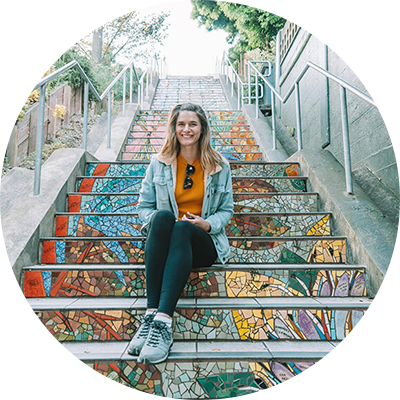Check out our complete guide on the best time to visit Death Valley National Park.
The “death” part of Death Valley sounds foreboding, doesn’t it?
While it’s true that Death Valley National Park sets the record for the world’s hottest temperatures, the Timbisha Shoshone Indians thrived there for centuries before white settlers gave it the ominous moniker in 1849.
To the Timbisha, the landscape provided everything they needed to thrive, including food and water.
Death Valley, known as the lowest national park, is new to the National Park Service. It’s the fifth-largest national park but didn’t receive official designation until 1994.
Today, hundreds of thousands of visitors pass through Death Valley National Park every year. If you’re driving between Las Vegas and the west coast, chances are you’ll go through Death Valley.
Below I’ve created an ultimate guide on the best time to visit Death Valley, including the best attractions for each season.
Whether you’re exploring the towering Mesquite Dunes or enjoying the sunset at Zabriskie Point, I’ve included all the main attractions– plus ones you probably haven’t heard of.
If you’re looking for what to do in Death Valley, click through to read more.
Note: this post contains affiliate links, which help run this site at no extra cost to you so I can keep providing free travel advice and tips.
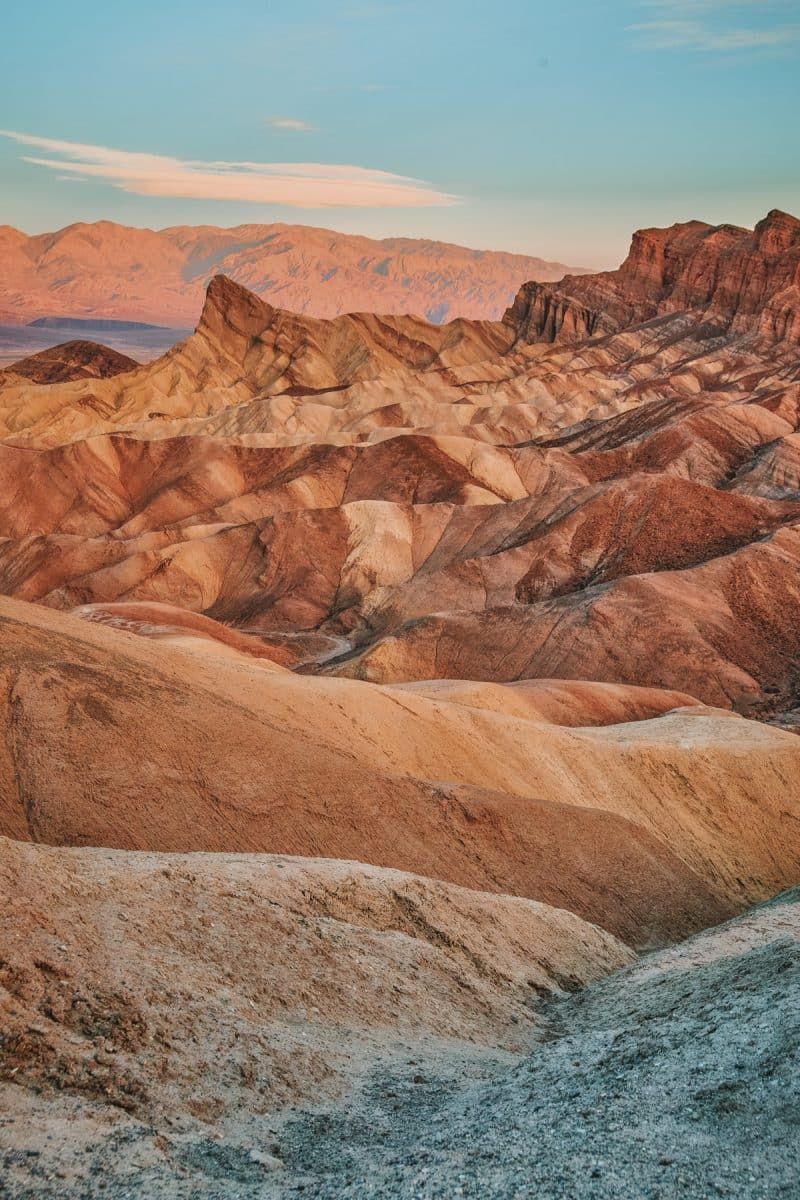
Death Valley Temperatures By Month
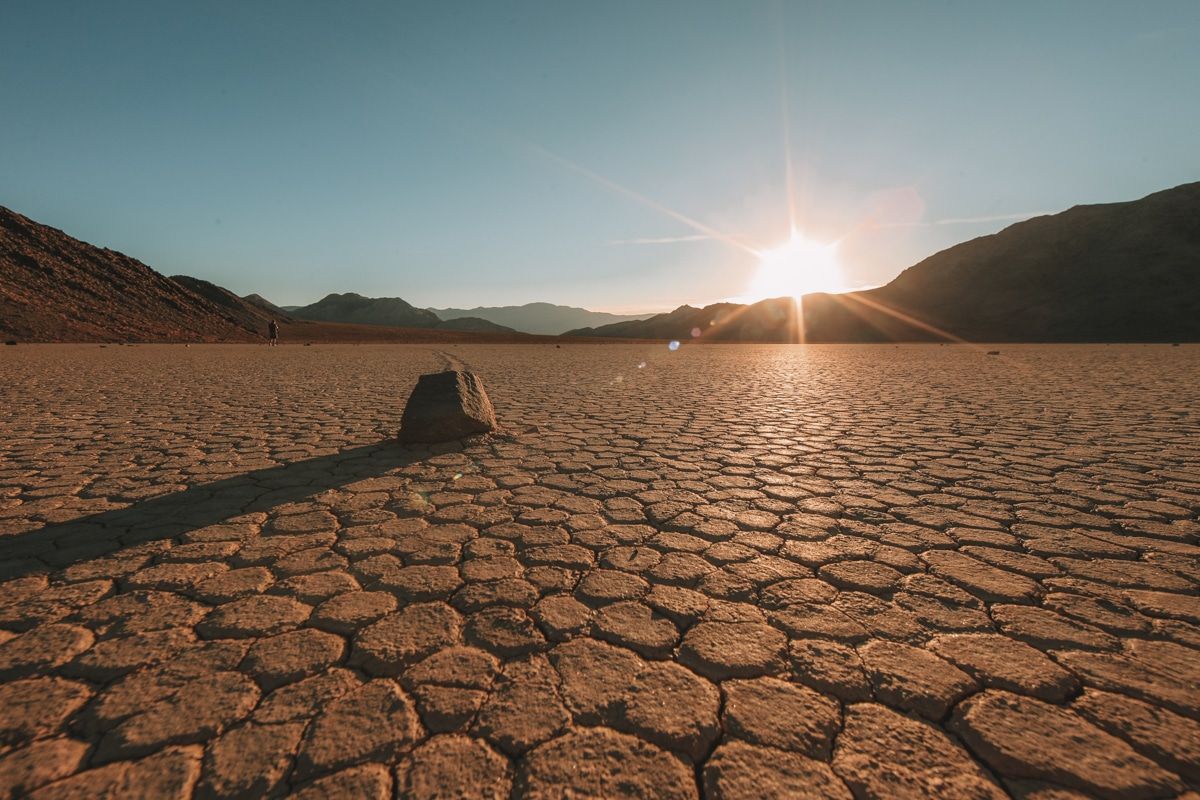
According to NOAA, here are the average Death Valley temperatures by month.
January: H 67, L 40
February: H 74, L 46
March: H 82, L 55
April: H 90, L 62
May: H 100, L 72
June: H 110, L 82
July: H 116, L 88
August: H 114, L 86
September: H 107, L 76
October: H 93, L 62
November: H 77, L 48
December: H 65, L 39
Best Time to Visit Death Valley By Season
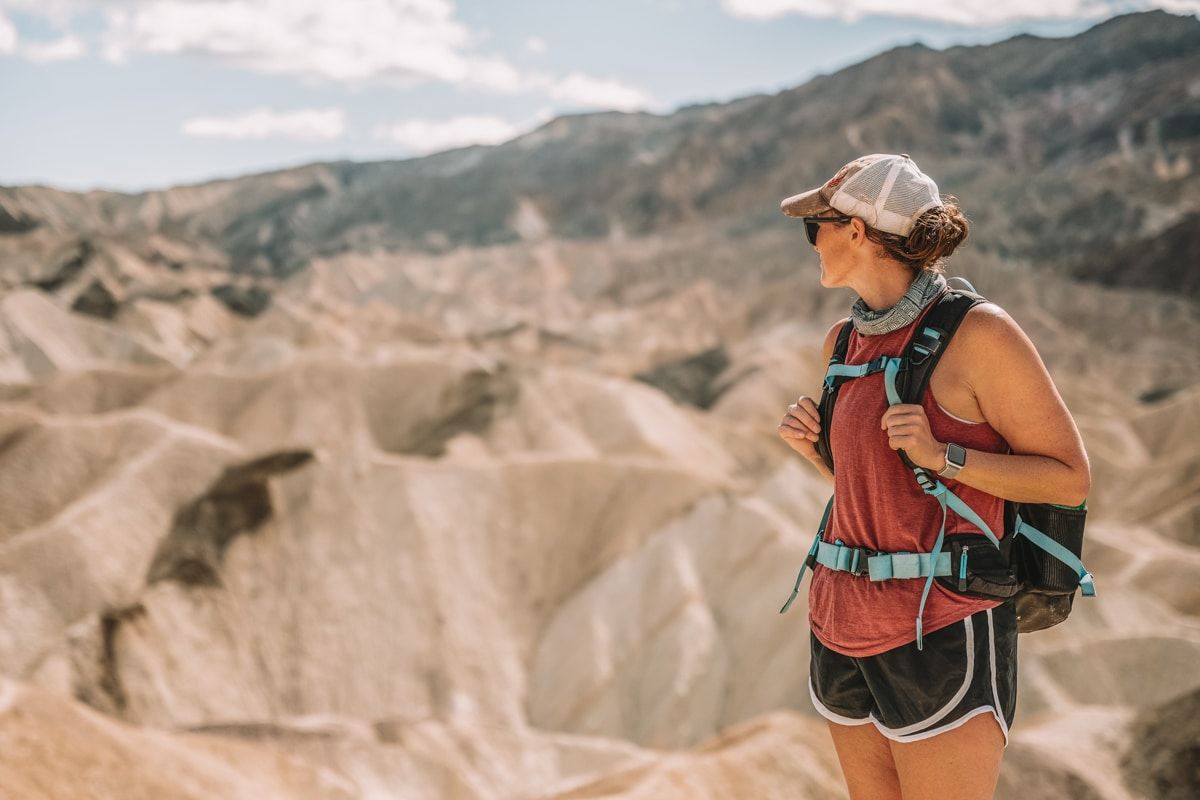
Death Valley in Spring [March to Mid-May]
Pros: Wildflower blooms and moderate temperatures
Cons: Spring break/wildflower crowds
Weather: Warm days and chilly nights
Practical Tips: Make reservations in advance; bring water and extra clothing layers for nighttime.
Best Things to Do: Mosaic Canyon, Natural Bridge, Ghost town exploration, Wildflower viewing
Best Lodging Options: Camping or hotels
Early spring is the best time for most visitors to visit Death Valley National Park. One of the major attractions in early spring is the wildflowers. That, plus the overall pleasant temperatures, make springtime a contender for the best time to visit the park.
There are usually *some* wildflowers yearly, but the blooms can be breathtaking if there’s adequate winter rain.
If you’re lucky, you may hit a superbloom, a once-in-a-decade phenomenon where wildflowers go nuts. The wildflower bloom usually peaks in late March or early April.
The most significant springtime cons are the crowds. Spring break falls between mid-March and late April, and hotels and campgrounds get booked up months in advance.
The weather in springtime consists of days in the 80s-100s and nights in the 50s-70s. When you visit, prepare for both sweltering days and cool nights with plenty of drinking water and extra clothing layers.
In addition to the wildflowers, springtime is a great time to tackle moderate hikes or explore the park’s many ghost towns.
For hikes, I strongly suggest Mosaic Canyon or Natural Bridge.
The park once housed a bustling mining scene, and you can still see many ghost towns from that period.
Many towns are off the beaten path, but if you’re coming from Lone Pine, California, there are some within striking distance of the park entrance.
Of course, if none of these suit your fancy, it’s never the wrong time to enjoy the vista from Zabriskie Point, which you can enjoy from the parking lot.
Both campgrounds and hotels are popular in spring. In early spring, check out Furnace Creek Campground or the Oasis at Death Valley (formerly Furnace Creek Ranch or Furnace Creek Inn).
For more recommendations on Death Valley Campgrounds, check out our complete guide.
Death Valley in Summer [Late May to September]
Pros: Fewer crowds
Cons: Extreme heat
Weather: Hot, hot, hot
Practical Tips: Plan activities early in the day, or plan indoor activities
Best Things to Do: Scenic driving, museum exhibits, Dante’s View, Telescope Peak
Best Lodging Options: Hotels (Panamint Springs, The Oasis at Death Valley)
Summer is the classic vacation season in America, but it’s the most challenging time to visit Death Valley because of the extreme temperatures.
But with preparation, it’s still perfectly safe to visit during the hottest months of the year, and you’ll benefit from a lack of crowds.
The *average* summer daytime high is over 100 degrees Fahrenheit, and the mercury routinely tops 120. Summer nights “cool off” to the ’80s, but I’ve slept in 80+ degree weather, and it’s uncomfortable.
Don’t expect much respite from the nighttime air.
Most summer visitors have the most enjoyable experience with self-guided driving tours and indoor activities like exploring the Furnace Creek Visitor Center museum exhibits.
Two popular driving tours are Artist’s Drive and the Star Wars driving tours.
Artist’s Drive is about 25-45 minutes and takes you past a “geologic rainbow” of rocks of different colors. Artist’s Palette is the most popular viewpoint because it has the brightest colors.
You can take your doggo on this drive, but he’ll need to stay on the pavement if you let him out.
Death Valley was a filming location for Star Wars: A New Hope, and you can take a driving tour of Star Wars film locations with the NPS App.
For drive-up lookouts, I recommend checking Dante’s View and Zabriskie Point–both spectacular viewpoints in the park.
It takes 45 minutes to drive to Dante’s View from Furnace Creek, but Dante’s View offers a bird’s eye view of the “valley” portion of Death Valley.
Zabriskie Point is just 15 minutes from Furnace Creek, and similarly to Dante’s View, it overlooks the Panamint Mountains and the valley floor and is excellent at sunset or sunrise.
Now is your time to tackle the high-elevation Telescope Peak, a challenging 14-mile out-and-back route.
Mid-July is the best time to see the Milky Way in Death Valley, so if you visit in summer, make plans to stay up late. Death Valley has the highest rating for night sky parks!
You’ll want to avoid camping during the hottest months. Instead, check out these two Death Valley hotels, Panamint Springs or The Oasis at Death Valley (formerly Furnace Creek Inn).
Tips for Visiting Death Valley in Summer
Bring Water and Electrolytes
Bring one gallon of water per person per day for your visit. I also recommend taking an extra gallon for your car, which may overheat.
You also need to bring some kind of sports drink. My preferred hydration ratio in the desert is two liters of water followed by one liter with an electrolyte mix.
Drinking too much plain water can make you sick, too, so you must balance it with sports drinks and/or salty snacks.
Explore in the Morning
Early morning is the best time to explore Death Valley in the summer. Thankfully, the sun rises early in the summer, so you can get up extra early to enjoy the best part of the day.
I don’t recommend strenuous activity past 10 am during the hottest months.
Know the Signs of Dehydration
If you feel nauseous, dizzy, fatigued, crampy, headachy, or “just bad,” seek air conditioning or shade. Dehydration kills, so listen to your body.
Likewise, desert newbs can sometimes drink too much water, and the symptoms can be similar to dehydration: nausea, vomiting, headache, low energy, and cramps can be symptomatic of too little salt in your system.
Stay with Your Vehicle if it Breaks Down
You may feel tempted to walk for help if your vehicle breaks down, but this is a bad idea. The paved roads in Death Valley radiate even more heat, and people have died walking for help.
Stay with your car and stay shaded.
Death Valley in Fall [October-November]
Pros: Fewer crowds, (generally) pleasant temperatures
Cons: October can be uncomfortably hot
Weather: Warm days and chilly nights
Practical Tips: Plan for Thanksgiving holiday vacations; Bring layers
Best Things to Do: 49ers Encampment, Golden Canyon Trail, Devil’s Golf Course
Best Lodging Options: Hotels or camping
The fall in Death Valley is a great time to visit for a few reasons. Generally, this is the least crowded time in the park, but you’ll still get comfortable temperatures.
Thanksgiving is hectic, but some of the quietest times in the park are before and after the break.
Death Valley in November sees daytime highs in the 70s-90s and lows in the 40s-60s.
Fall marks the return of ranger programs around the park and the unique event known as the 49ers Encampment.
The Death Valley 49ers is a membership club that celebrates and promotes all things Death Valley.
During their annual encampment, there are historical education programs, a wagon train, a southwest craft show, plus a wheelbarrow race, and a pioneer costume contest.
The weather in the fall is excellent for hiking and adventurous road trips. I recommend the Golden Canyon Trail.
Depending on how you modify it, the Golden Canyon Trail can range from easy to strenuous. The route takes you through golden-colored badlands that would be too low in elevation to explore in the summer.
The Devil’s Golf Course is another good fall stop. The landscape is an eroded salt flat pock-marked into jagged salt formations. You’ll understand why only the devil would play golf there when you see it.
Finally, don’t forget year-round classics like Zabriskie Point, Dante’s View, or Artist’s Palette for an excellent stop-and-stare attraction.
Camping and hotel lodging rates are reasonable in the fall, but I suggest making early reservations for the Thanksgiving break.
Death Valley in Winter [December-February]
Pros: Best time for low-elevation activities
Cons: Weekends are busy
Weather: Cool days and cold nights
Practical Tips: Dress warmly; Plan ahead for Christmas, New Year, MLK, and President’s Day Weekends
Best Things to Do: Badwater Basin, The Racetrack, Mesquite Sand Dunes
Best Lodging Options: Hotels
Death Valley weather in winter sees daytime highs in the 60s-70s and lows in the 30s-40s.
Winter is an excellent time to go to Death Valley, especially if you’re dying to see the low-elevation attractions like Badwater Basin and The Racetrack.
Badwater Basin is a salt flat with iconic polygon-shaped salt patterns. The lowest spot in the United States, it’s unbearably hot in the summer months but very doable in winter.
The Racetrack is tough to access–it’s at the end of 27 miles of unpaved, rough road. But it includes the mysterious rocks that have slid across the dry lakebed–apparently of their own volition.
Park rangers have issued strongly worded warnings about how difficult it is to access the Racetrack, so don’t take on that activity flippantly.
All of the holiday weekends in winter are very busy, so plan ahead if you want to stay in the park between Christmas and New Year or for MLK or Presidents’ Day weekend.
Finally, the Dark Sky Festival happens over Presidents’ Day weekend, and it is a science nerd’s dream. Night sky ranger programs, astrophotography meetups, and science talks are available around the park.
The Mesquite Flat Sand Dunes are another popular winter attraction. The enormous Mesquite Dunes are a fun place for kids to slide down, and the sand doesn’t scorch in the winter.
Options like Furnace Creek Campground are open in winter, but as someone who’s a baby in cold weather, I’d recommend the hotels.
The Oasis at Death Valley (formerly Furnace Creek Ranch or Furnace Creek Inn) has everything you need to stay comfortable.
What is the Best Month to Visit Death Valley?
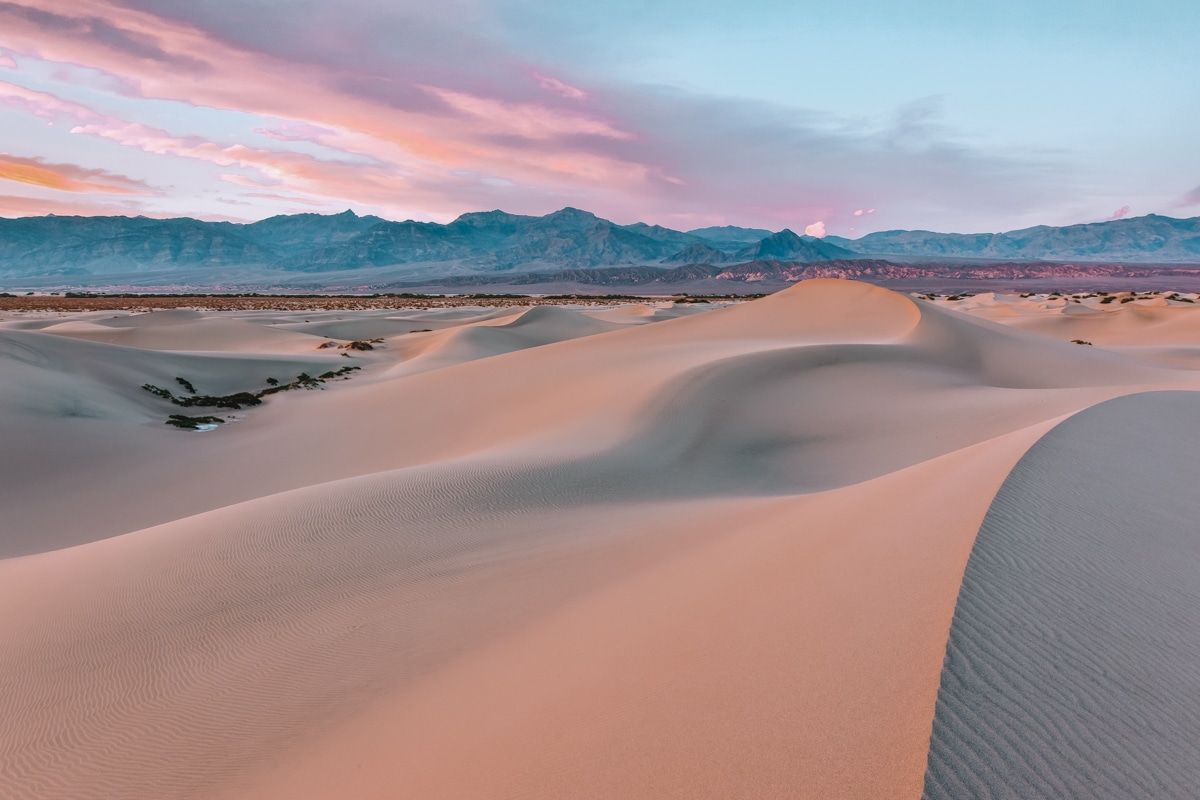
The best time of year to visit Death Valley is winter, and more specifically, February.
The winter months in Death Valley National Park come with average daytime highs between 65-75 degrees Fahrenheit with lows in the 40s.
February is the best time to visit low-elevation attractions like Badwater Basin and the Valley floor. Winter offers the best camping season, although nights will be chilly.
One of the best things to do in February is attending the Dark Sky Festival. I also recommend stopping at the Furnace Creek Visitor Center for one of their ranger programs, which only run in winter.
Low-elevation hiking options expand in February, a great month for backpacking.
What is the Best Time of Day to Visit Death Valley?

The best time of day to explore Death Valley depends on the season.
Spring (March-Early May)
Early spring has the most pleasant daytime temperatures, but by mid-May, you’ll want to avoid mid-day activities. Early to mid-morning and evenings are the best times to explore.
Summer (Late May-September)
The extreme heat in the summer months is no joke, so you only want to be out in very early morning (like 5:30 am).
You shouldn’t spend more than a few minutes outside a climate-controlled vehicle or building. I used to work outside in the desert, and 5:30-6 am in the summer felt just right.
Fall (October-November)
By October in Death Valley National Park, the average daytime temperature is still 93 degrees Fahrenheit, so it’s best to explore in the morning or evening.
Winter (December-February)
All day! Winter months in Death Valley National Park bring chilly nights and agreeable daytime temperatures. Most visitors can safely recreate all day in winter.
When is the Best Time to Visit Death Valley for Stargazing?
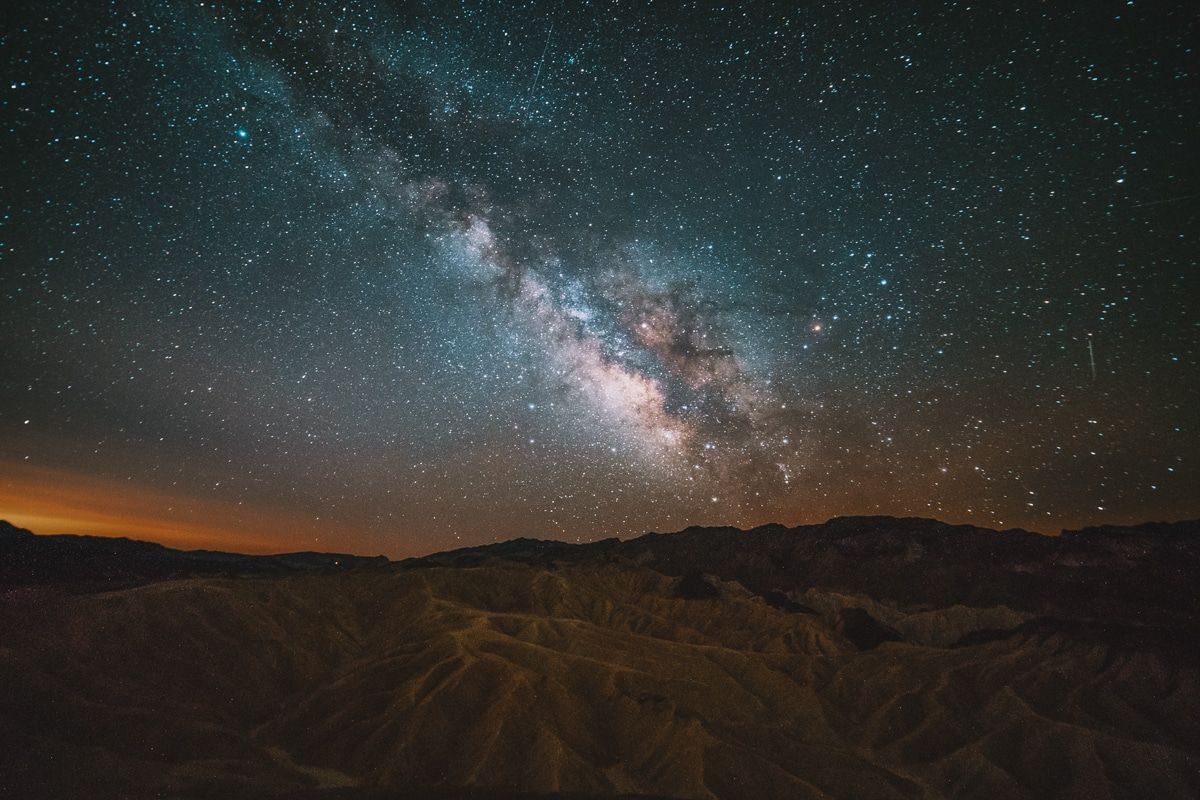
I was a planetarium operator in college, and I love me a starry sky!
Death Valley is a phenomenal place for stargazing because the International Dark-Sky Association has awarded it the Gold Tier designation, which means it’s the darkest of the dark.
The best time for stargazing is during the new moon when the moon isn’t visible. The new moon date changes every month.
If you’re interested in night sky ranger programs, visit Death Valley in winter.
If you want to see the Milky Way, your best bet is the summer months, from June to early August. Stay out until about midnight.
Dark Sky Festival at Death Valley
I haven’t been to Death Valley’s Dark Sky Festival, but I’ve been to other night sky events, and they are so much fun!
The 2023 Festival will take place on Presidents’ Day weekend in February.
The Jet Propulsion Laboratory, Goddard Space Flight Center, SETI Institute, and Cal Tech (aka, the rock stars of space) have partnered with Death Valley for the Festival, ensuring this is a…star-studded (??) event.
There are science talks at the Furnace Creek Visitor Center, tons of giant telescopes to peer through, astrophotography groups, and family programs.
Best Places for Stargazing in Death Valley
According to the ranger-made list on their website, Harmony borax works, Mesquite Flat Sand Dunes, Badwater Basin, and Ubehebe Crater are the best spots for stargazing.
When is the Best Time to See a Superbloom in Death Valley?
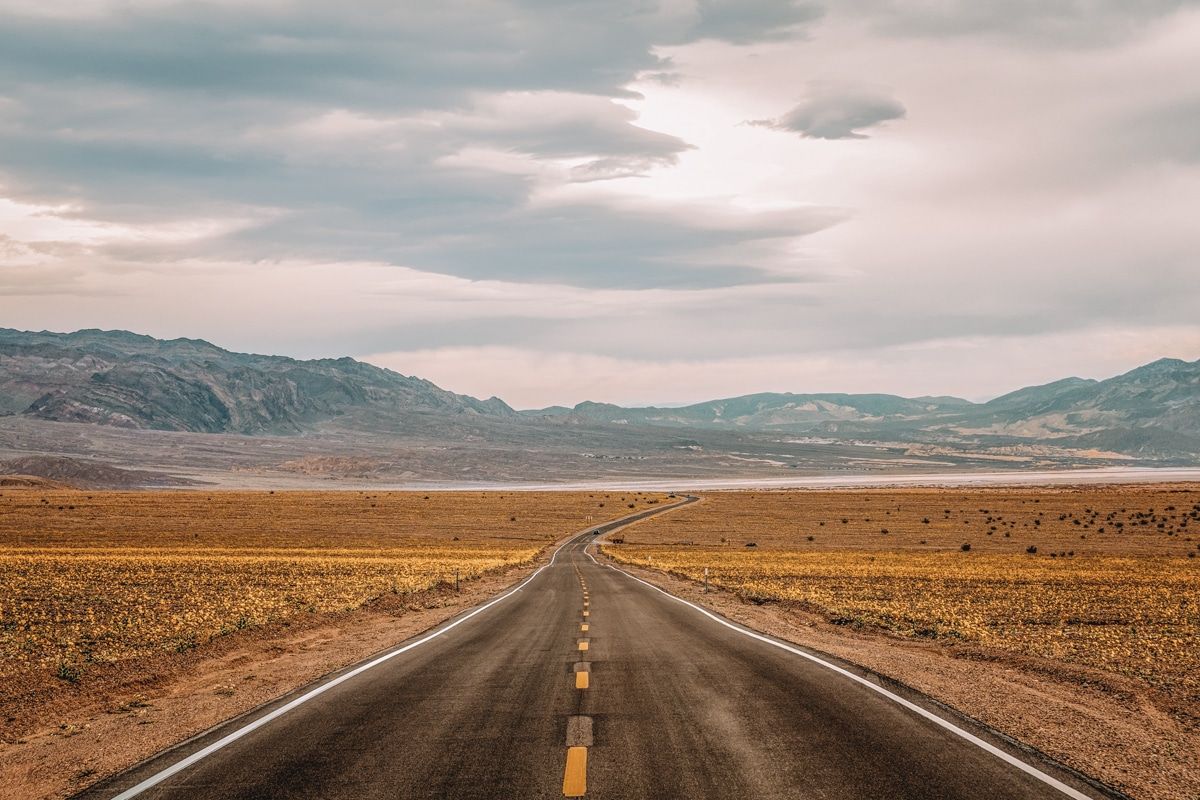
What is a Superbloom?
A superbloom is a natural phenomenon that happens about every ten years. When the winter rain, wind, and sun conditions are right, an enormous, spectacular mass wildflower bloom occurs in the desert.
Best Time and Place to See the Superblooom
As with anywhere, the best time to see flowers bloom depends on the elevation.
Valley Floor and Foothills
The best time to see flowers in the lowest, hottest areas is mid-February to mid-April.
The best places to see the low-elevation blooms are Badwater Road, Green Valley Road, Titus Canyon Road, and Death Valley Road.
3000-5000 ft Elevation
The best time for flower blooms in the canyons and high-elevation valleys is early April to early May.
Zabriskie Point, Furnace Creek, and Daylight Pass are the best places to see flowers at mid-elevations.
5000-11000 ft Elevation
The best time for flower blooms near mountain peaks and in the pine/juniper woods is early May to mid-July.
You’ll have to go to the highest points to see flowers at this elevation range. Check out the Wildrose Campground area and other lookout points.
What Types of Flowers Does Death Valley Have?
In Death Valley, you can expect to see Desert Gold, Golden Evening Primrose, Bigelow Monkeyflower, Brittlbrush, Desert Paintbrush, Desert Globemallow, Indigo Bush, Panamint Penstemon, and many others.
How to Predict a Superbloom?
The desert floor needs two conditions to set the stage for a superbloom: evenly spaced rainfall in the winter and spring and the absence of destructive windstorms.
Desert soils are delicate and need gentle rains that seep deep into the ground to encourage plant growth.
In fact, most desert flowers need a half inch of precipitation or more to remove their protective outer seed coating.
Rainstorms in September or October set the stage for a superbloom, but the fragile plant babies need to receive an even distribution of rain throughout the remainder of the winter and spring to thrive.
Windstorms in the desert can be destructive, especially to small plants. If a big windstorm blows through, it may kill off the newly budding flowers.
Does the Superbloom Happen Every Year?
No, although some flowers may bloom most years, a true superbloom is a rare occurrence. The last superblooms in Death Valley were in 2016, 2005, and 1998.
Can I Pick Flowers in Death Valley?
No. Even in superbloom years, when the supply of flowers is seemingly endless, it’s prohibited to pick any plants in national parks.
FAQs About Visiting Death Valley National Park
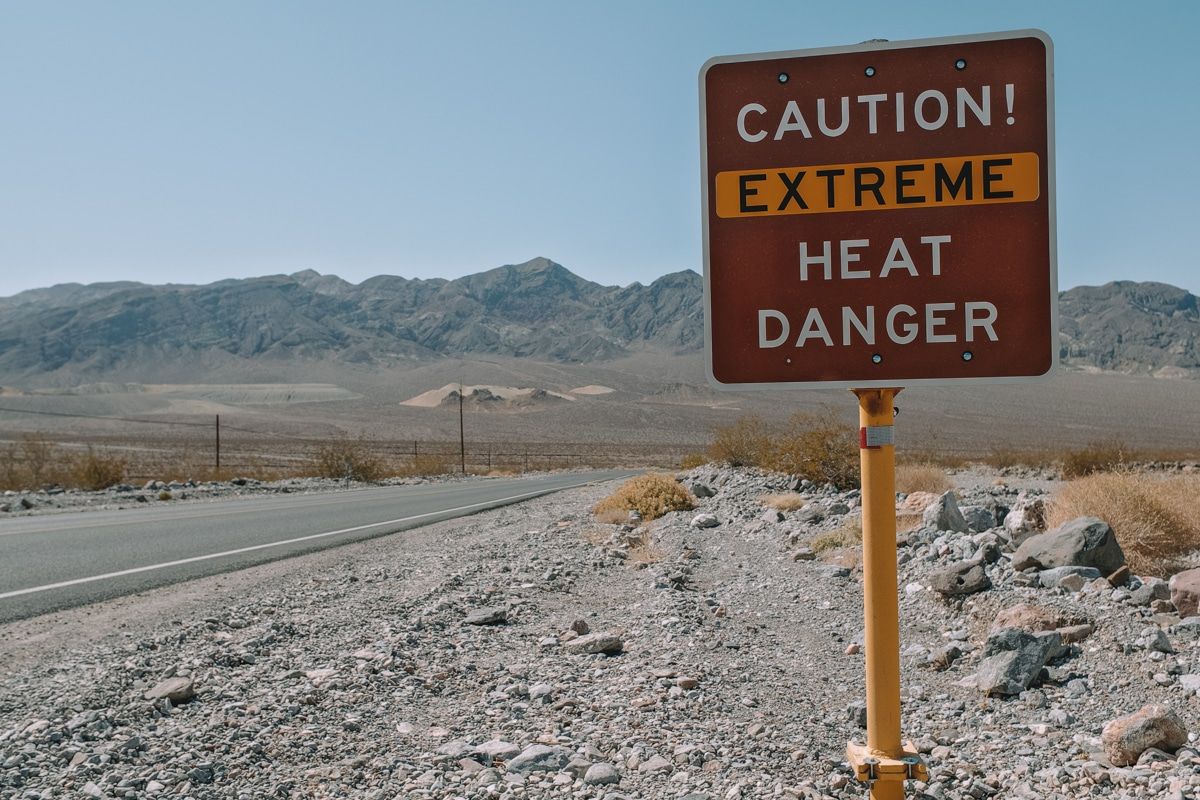
How many days do you need in Death Valley?
Death Valley National Park is the largest national park in the lower 48. Driving the length of the park alone takes a few hours. Give yourself at least two days to fully absorb the majesty of Death Valley.
Is Death Valley too hot in April?
Most visitors can recreate in April without getting too hot, provided they don’t overexert themselves in the middle of the day.
In April, average daytime highs in Death Valley National Park are in the high 80s or low 90s, and average lows are in the low 60s.
Early April will be on the lower end of this spectrum, while late April will be on the higher end.
How hot is Death Valley in May?
May is the start of the summer in Death Valley and scorchingly hot weather. The average high temperature is 100 degrees Fahrenheit with lows in the 70s.
Does it snow in Death Valley?
Yes! It snows on the Panamint Mountains, including Telescope Peak in Death Valley. It even snows at sea level near Furnace Creek about once a decade, although it’s usually just a dusting.
What is the hottest month in Death Valley?
July is the hottest month in Death Valley National Park, with daytime averages over 115 degrees Fahrenheit.
Extreme temperatures mark May through September, especially in the low-lying Furnace Creek area.
What’s the worst time to visit Death Valley?
Summer is the most challenging time to visit Death Valley, and the summer heat in Death Valley is brutal on both people and vehicles. Bring lots of water, sunscreen, and protective clothing if you visit Death Valley in the summer.
Ensure your vehicle is in good working order by topping off fluids before you arrive.
What’s the hottest temperature ever recorded in Death Valley?
Death Valley is home to the lowest point in the United States at 282 feet below sea level. Given this, it isn’t surprising that Death Valley is a record-setter for hot temperatures.
The hottest temperature ever recorded in Death Valley was 134 degrees Fahrenheit at Furnace Creek in 1913, which also happens to be the world record hottest temperature.
ABOUT THE AUTHOR

Meredith Dennis
Meredith is a biologist and writer based in California’s Sierra Nevada. She has lived in 6 states as a biologist, so her intel on hiking and camping is *chef’s kiss* next level. One of her earliest camping memories was being too scared to find a bathroom at night on a family camping trip. Thankfully, she’s come a long way since then and she can help you get there too!
Can’t get enough of California desert landscapes? Check out these related articles below!
Best Campgrounds in Joshua Tree National Park
Best Things to do in Joshua Tree
Top Joshua Tree Glamping Sites
Best Hikes in Joshua Tree National Park
Things to do in Palm Springs, California
Palm Springs to Joshua Tree: How to Make the Most Out of Your Trip
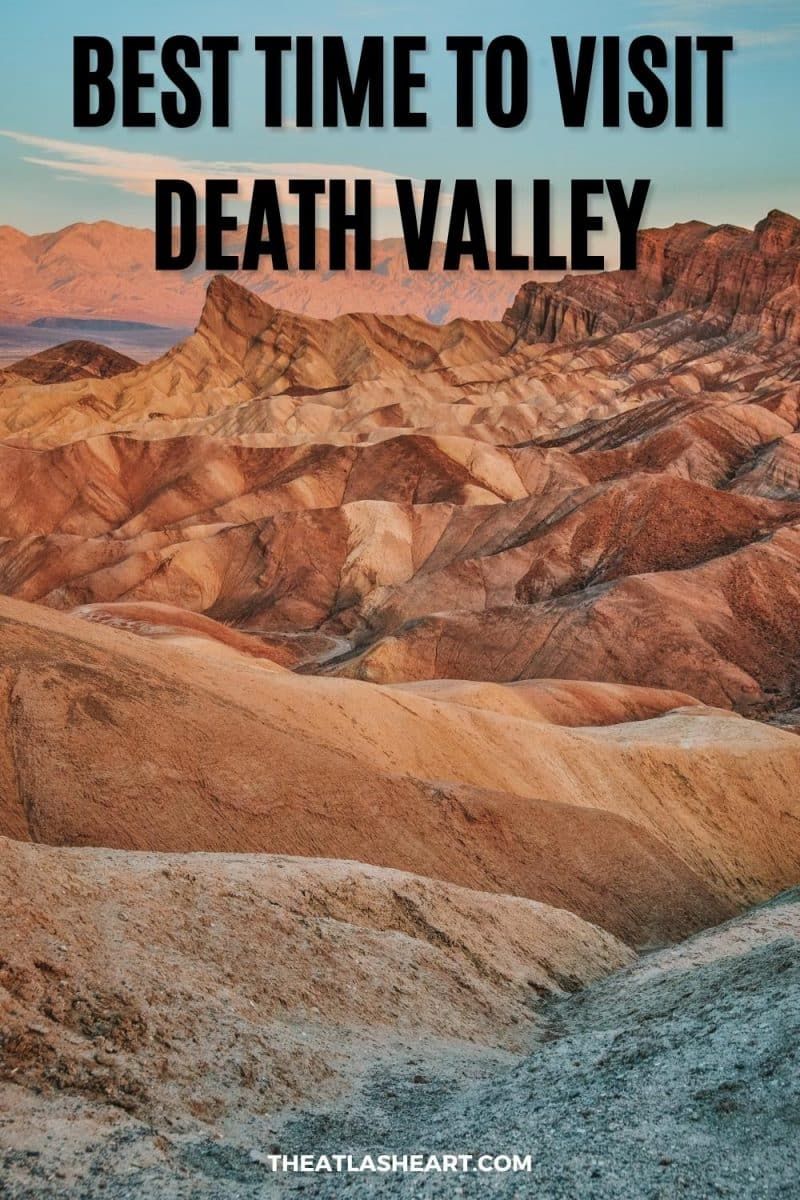
Pin this image for future reference

